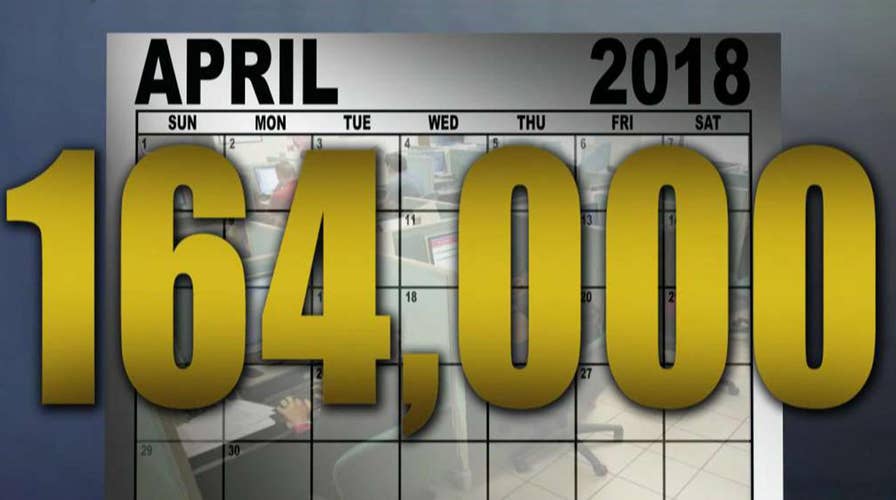President Trump touts new job numbers
Unemployment rate drops to 3.9 percent; Peter Doocy reports from the White House.
WASHINGTON – U.S. jobseekers likely enjoyed April after slogging through a so-so March.
The jobs report the government will issue Friday is expected to show that employers added 190,000 jobs last month, according to a survey of economists by the market data firm FactSet. That gain would be nearly double the 103,000 jobs that were added in March. The unemployment rate is expected to have dipped to 4 percent after holding at 4.1 percent, a 17-year low, for six straight months.
The Labor Department will issue the April jobs report at 8:30 a.m. Eastern time.
Americans are benefiting from a solid and resilient job market, with wages finally picking up in some industries and the number of layoffs steadily falling. The pace of hiring has yet to be disrupted by dramatic stock market swings, a recent pickup in inflation and the risk that the tariffs being pushed by President Donald Trump could provoke a trade war.
Much of the economy's strength, for the moment, comes from the healthy job market. The increase in people earning paychecks has bolstered demand for housing, even though fewer properties are being listed for sale. Consumer confidence has improved over the past year. And more people are shopping, with retail sales having picked up in March after three monthly declines.
Workers in the private sector during the first three months of 2018 enjoyed their sharpest average income growth in 11 years, the Labor Department said last week in a separate report on compensation. That pay growth suggests that some of the momentum from the slow but steady recovery from the 2008 financial crisis is spreading to more people after it had disproportionately benefited the nation's wealthiest areas and highest earners.
The monthly jobs reports have shown pay raises inching up. Average hourly earnings — not adjusted for inflation — have risen 2.7 percent from a year ago. Back in 2014 and 2015, average year-over-year pay growth was roughly 2 percent.
At the same time, employers have become less and less likely to shed workers. The four-week moving average for people applying for first-time unemployment benefits has reached its lowest level since 1973. The trend reflects a decline in mass layoffs. Many companies expect the economy to keep expanding, especially after a dose of stimulus from tax cuts signed into law by Trump that have also increased the federal budget deficit.
Inflation has shown signs of accelerating slightly, eroding some of the potential wage growth. Consumer prices rose at a year-over-year pace of 2.4 percent in March, the sharpest annual increase in 12 months. The Federal Reserve has an annual inflation target of 2 percent, and investors expect the Fed to raise rates at least twice more this year, after an earlier rate hike in March, to keep inflation from climbing too far above that target.
The home market, a critical component of the U.S. economy, has been a beneficiary of the steady job growth. The National Association of Realtors said that homes sold at a solid annual pace of 5.6 million in March, even though the number of houses for sale has plunged. As a result, average home prices are rising at more than twice the pace of wages.


